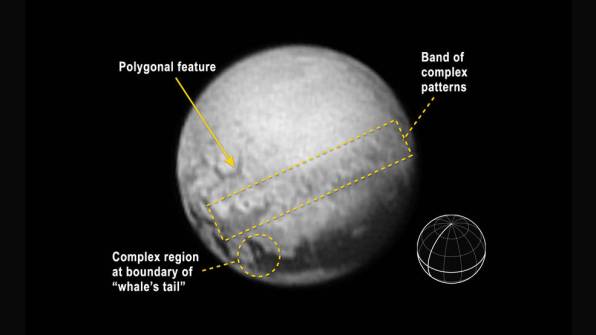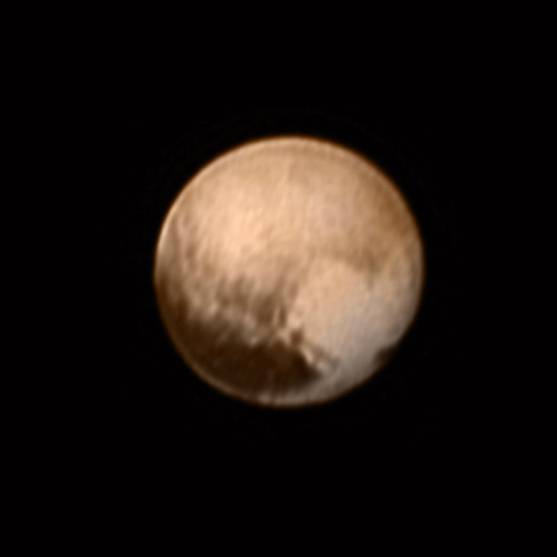Yesterday we got the first surface resolution of Charon, Pluto’s largest (and first discovered) moon. 
(Thanks as always to the excellent io9.com for this composite picture.)
Charon wasn’t discovered until 1978 — almost fifty years after Clyde Tombaugh first spotted Pluto’s infinitesimal speck on those big glass plates he’d exposed during hour-long sessions at the 13-inch telescope atop Mars Hill. Here’s the Zeiss Blink Comparator he used to compare one plate with another. (Formerly housed in the beautiful Saturn Dome room at Lowell Observatory, the comparator has now been moved to the Smithsonian Institution.)
It’s hard to convey exactly how tiny the speck of Pluto is on those plates — but boy, is it tiny. So small, in fact, that Pluto could easily have gone undiscovered for decades. Only a man like Clyde Tombaugh — diligent, devoted, impossibly obsessive — could have found it. Read more about Clyde’s homemade telescope here, and more about Clyde generally here.
And if you’re so inclined, you can check out my novel about Clyde Tombaugh and the discovery of Pluto here. Order one here today! (End of commercial.)




